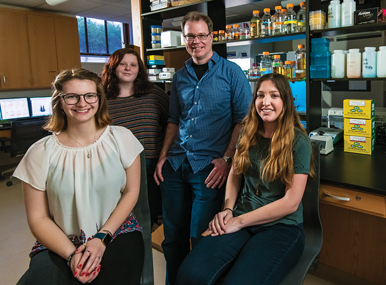
AU biologists had a devil of a good time genetically mapping Halicephalobus mephisto.
Named for Mephistopheles, a subterranean demon from the medieval German legend of Faust, the “devil worm” is the deepest-living animal in the world, burrowing nearly a mile underground. Discovered in 2008 in an active South African gold mine, its genome sequencing—the first of any subterrestrial animal—provides clues to how an organism adapts to lethal environmental conditions, including blistering heat, limited oxygen, and high amounts of methane.
“The devil worm can’t run away; it’s underground. It has no choice but to adapt or die,” says John Bracht, the College of Arts and Sciences professor who led the project.
Bracht and his team found that the genome encodes an unusually large number of heat-shock proteins known as Hsp70, which exist in all life forms and restore cellular health due to heat damage. Many of the devil worm’s Hsp70 genes were copies of themselves—an exciting discovery that indicates the worm’s evolutionary adaptation.
“We propose that when an animal cannot escape intense heat, it starts making additional copies of these two genes to survive,” says Bracht, who—along with biology grad students Deborah Weinstein, CAS/MA ’19, and Sarah Allen, CAS/MA ’17—published the results in Nature Communications last November.
Resident aliens
Bracht first embarked on the project as a postdoctoral fellow at Princeton University. When he joined the AU faculty in 2014, the devil worm came with him.
When Bracht told his students that aliens had landed at AU, the metaphor wasn’t a stretch. NASA supports devil worm research for what it can teach scientists about the search for life beyond Earth.
“Part of this work entails looking for ‘biosignatures’ of life—stable chemical clues left behind by living things,” Bracht says. “We focus on a ubiquitous biosignature of organic life—genomic DNA—obtained from an animal that has adapted to an environment once considered uninhabitable to complex life: the deep terrestrial subsurface.
“It is work that might prompt us to broaden the search for extraterrestrial life to ‘uninhabitable’ exoplanets’ deep subterrestrial regions.”
For H. mephisto, the devil’s in the details.